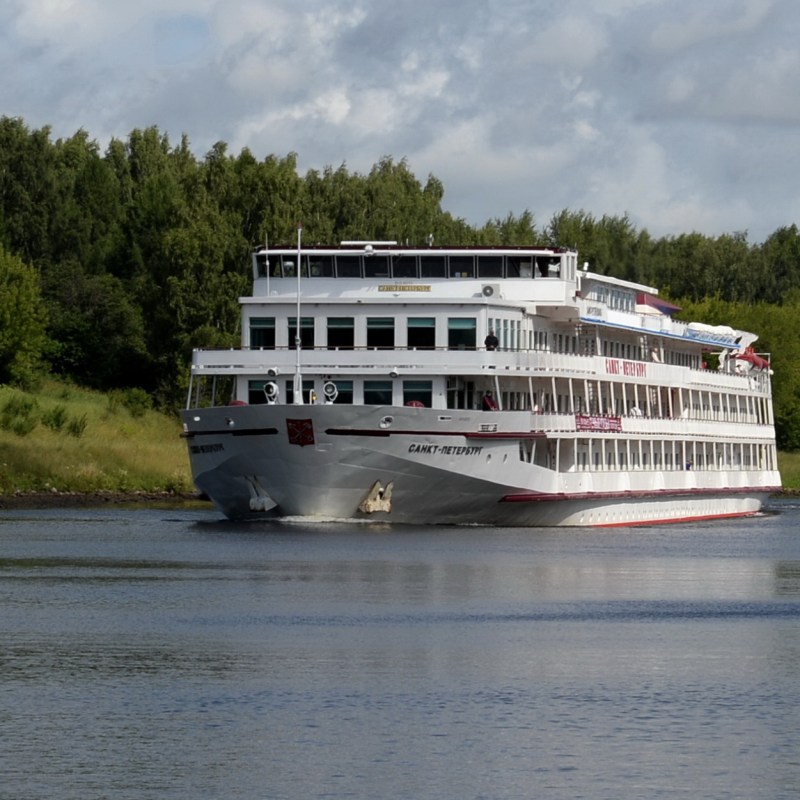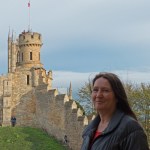
There were several things I wanted to do when I visited Saint Petersburg in 2005. I hoped to see the art in the Hermitage Museum, to watch the ballet at the Mariinsky Theatre, and to enjoy the local borscht and vodka. I also wanted to take a cruise around the city’s many canals.
Videos by TravelAwaits
Saint Petersburg is a watery city — it’s known as the Venice of the North — with more than 70 rivers and canals. I thought that a boat trip would be the perfect way to get a different perspective of the grand buildings and to pass beneath some of the city’s 400 bridges.
Planning The Trip
I had it all planned. I was staying with my husband at a lovely boutique hotel — the Alexander House — and the staff members were happy to arrange a taxi for us to the waterfront. Having been on tourist cruises in many other cities around the world, I had no doubt that it would be easy to book ourselves onto a boat and to spend the morning cruising along the canals. How wrong I was!
This was some years after the fall of communism in Russia, but in many ways it still felt like a command economy. In the shops and restaurants, people were polite enough, but they never seemed to be in any hurry to offer information or to persuade us to buy anything. It was the same at the waterfront. This was a bustling area with men walking up and down with megaphones, giving muffled instructions in Russian. However, I couldn’t find anyone to advise us on the options available.
Armed with a pocket dictionary and my almost-forgotten two terms of high-school Russian, I tried to decipher the notices on the wall. But handwritten Russian does not always match the printed version, and eventually I realized I would have to take potluck. I walked up to the nearest window, pushed a pile of rubles across the counter, and mustered enough of the language to ask for two tickets. We found our boat and looked forward to a relaxing trip.
Heading Out To Sea
It was a little while after setting out that I started to suspect that something was wrong. Instead of turning inland, the boat had left the city and was steaming out to sea. Were we getting a harbor cruise before going into the canals? Or were we going somewhere else entirely? I had thought that all of the boats at the terminal were heading for the canals, but perhaps I had been wrong.
At that point, I started to panic. Were we bound for a far-off destination? Another country even? A glance at my map suggested that we were moving along the Gulf of Finland, and that one could get as far as Tallinn or Helsinki from there. Nervously, I looked at the ticket in my hand, and I started to decipher the letters. Peterhof, it said.
I consulted the guidebook. We would still be in Russia (luckily, since we didn’t have our passports with us), but we would be around 20 miles from Saint Petersburg. Panic turned to anxiety, and I turned to break the news to my husband.

Arrival At Peterhof
I spent the rest of the journey scouring the guidebook for information about Peterhof and what we would find there. I discovered that it had been the summer palace of Peter the Great, with extensive gardens that were later expanded and landscaped by Peter’s daughter, the Empress Elizabeth, and that it remained an imperial residence until 1917. The estate was substantially damaged during World War II, but it was later restored and reopened.
By the time we arrived at Peterhof, we were keen to see the gardens for ourselves, which was just as well, since we had no choice but to leave the boat and to enter the palace grounds. But we weren’t prepared for the magnificence of the place. We were quite awed by what we saw.

The Russian Versailles
Peterhof was constructed in 1703 and modeled on the palace and gardens of Versailles. We didn’t want to spend too much time there — we knew we needed to find our way back to Saint Petersburg — so we didn’t go inside the palace. That was a pity, since the baroque exterior was stunning, and I later learned that the inside was as opulent as you would expect, with fabulously ornate decor, pictures, and furnishings.
We contented ourselves with walking around the gardens. There were three separate parks, but the Lower Gardens were the most spectacular. Three long avenues radiated from the house toward the sea, the central one being the Marine Canal, a waterway connecting the house with the sea. This presumably enabled Peter the Great to travel to his summer palace from the city the same way we did.
The main features of the Lower Gardens were the fountains — almost 200 of them, fed by underground water and springs. Some lined the sides of the Marine Canal, and others dotted the garden. For us, the highlight of the park was the Grand Cascade, a memorial to a famous Russian naval victory. It was a fantastical confection of 64 fountains, 138 water jets, and 225 gilded sculptures.

A Happy Accident
There was just one problem: How would we return to Saint Petersburg and our hotel? Fortunately, this proved to be the easy part. After a bit of wandering around the jetty, we found someone who could point us to the right boat. We were back in plenty of time for dinner (I can’t now remember what we had, but I’m guessing that it involved borscht and vodka).
Looking back, I realize that there were things we could have done differently. As always, a bit more pre-trip research would have been helpful. And perhaps we should have accepted that we were struggling with the language and the lack of tourist information. I have no doubt that the helpful staff at our hotel would have offered advice if we had asked.
Although I never got my canal cruise, the trip to Peterhof turned into a happy accident. As we flew out of Saint Petersburg two days later, I looked down on the gardens of Peterhof and marveled at how they resembled Versailles from the air. I reflected that, if we had not boarded the wrong boat, we might never have known that those gardens existed.
For more to see and do in Saint Petersburg, see this piece.
